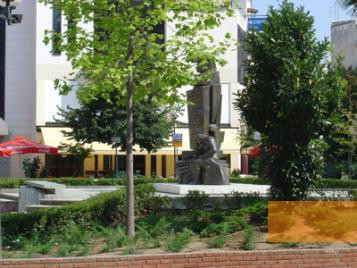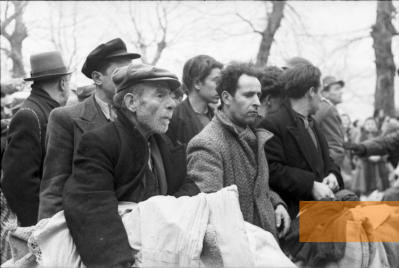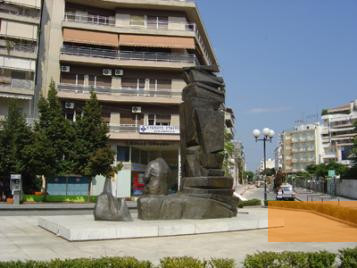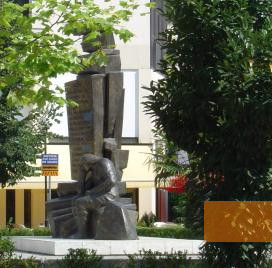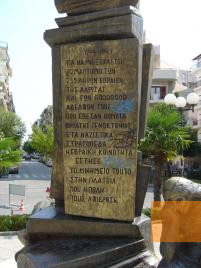Larissa, located in Northern Greece, was one of the starting points for deportations to the Auschwitz-Birkenau death camp in 1944. A memorial honours the »Jewish martyrs of the Holocaust«.
Larissa, the capital of the Thessaly periphery, came under Italian occupation after the German invasion in 1941. The city was home to about 1,120 Jews. Following the armistice between Italy and the Allies in September 1943, the Wehrmacht took control of the territories previously under Italian occupation. Soon, the National Socialists began registering all Jewish residents. Various people and institutions, including partisans, Jewish communities, municipal administrations and the orthodox church tried to warn the Jews in Thessaly and help them flee. Well over 500 managed to escape from Larissa to the mountains, where they were found refuge with the National Liberation Front (EAM) and the Greek People's Liberation Army (ELAS), both partisan organisations. 225 Jews from Larissa followed the order issued by higher SS and police leader Jürgen Stroop and showed up for registration. Security police (SP) and security service (SD) as well as members of the Wehrmacht arrested them in their houses in the night of March 24/25, 1944, and brought them to a collection camp which had been set up in an automotive depot in the city. Jews from numerous towns in the regions of Epirus and Thessaly were assembled by Stroop's orders, among others from the cities of Volos, Trikala, and Ioannina. The Jews had to hand their valuables over to the guards. A deportation train carrying 1,300 Jews, which had departed from Athens on April 2, 1944 and was headed for Auschwitz-Birkenau, made a stopover in Larissa. The National Socialists coupled another fifty cattle cars onto the train and forced the Jews who had assembled in Larissa to board them. The journey to the death camp lasted nine days. Many died along the way, especially elderly people, unable to take the exertions of travelling in inhumane conditions in the crowded cattle cars.
The deportation train from Athens consisted of a total of 84 cars upon its departure from Larissa. Over 5,000 Jewish men, women and children were deported to Auschwitz-Birkenau. This was the largest transport the National Socialists organised from Greece to the death camps.
Today, Larissa is again home to a large Jewish community which has its own primary school, cultural centre and cemetery. In 1982, a square in the city centre was renamed to »Square of Jewish Martyrs of the Holocaust«. The Jewish community and municipal authorities erected a Holocaust memorial on this square in 1987. The bronze sculpture, depicting a stele and a woman whose head is bowed in mourning next to it, was designed by sculptor Giorgos Hoularas.
- Name
- Mnimeio Olokaytomatos
- Phone
- +30 (0)241 053 296 5
- Fax
- +30 (0)241 053 296 5


